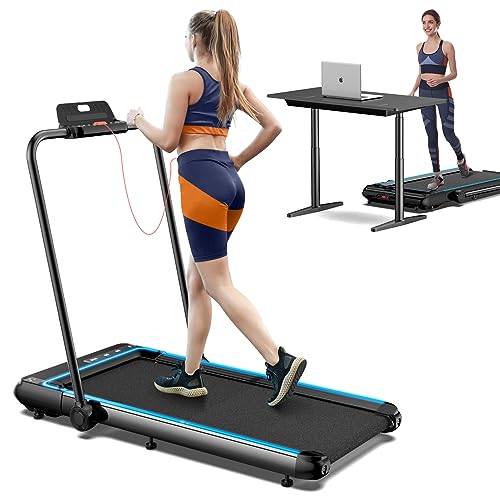20 Myths About Tread Mill: Debunked
Treadmills: A Comprehensive Guide to Understanding Their Functionality, Benefits, and Appropriate Selection
Introduction
Treadmills have become a staple in contemporary physical fitness regimens, both in homes and fitness centers worldwide. They use a practical and effective way to preserve cardiovascular health, boost endurance, and help in weight management. This post checks out the different kinds of treadmills, their advantages, functions to think about when acquiring, and some FAQs to assist users in making informed choices.
Types of Treadmills
When it pertains to picking a treadmill, it is vital to comprehend the different types readily available in the market. Here are the primary categories:
1. Manual Treadmills
- Mechanism: These treadmills have a simple style and rely on the user's efforts to move the belt.
- Pros: More economical, quieter operation, no electrical energy needed.
- Cons: Limited features, might not offer the exact same range of workout strength.
2. Motorized Treadmills
- System: Powered by a motor that drives the belt, allowing users to stroll or run at a set rate.
- Pros: Greater variety of speeds and slopes, geared up with various functions such as heart rate screens and exercise programs.
- Cons: More costly and might need more maintenance.
3. Folding Treadmills
- Mechanism: Designed for those with restricted area, these treadmills can be folded for simple storage.
- Pros: Space-saving, often motorized, flexible functions.
- Cons: May be less long lasting than non-folding designs.
4. Industrial Treadmills
- System: High-quality machines developed for usage in fitness centers and gym.
- Pros: Built to withstand heavy use, advanced functions, often consist of warranties.
- Cons: Pricey and not perfect for home use due to size.
5. Curved Treadmills
- Mechanism: A distinct design that allows users to propel the belt utilizing their own energy.
- Pros: Offers a more natural running experience, promotes better running form.
- Cons: More expensive and can be noisier.
| Treadmill Type | Pros | Cons |
|---|
| Manual | Economical, no electrical power needed | Restricted functions |
| Motorized | Range of speeds, advanced functions | Upkeep required |
| Folding | Space-saving, often motorized | May lack durability |
| Business | Developed to last, professional-grade features | Costly |
| Curved | Natural running experience, promotes great form | Higher price |
Advantages of Using Treadmills
Treadmills provide numerous advantages that can contribute to one's total fitness goals. Some of these benefits include:
- Convenient Workouts: Treadmills permit users to work out inside your Home Treadmills uk (gitea.mocup.org) regardless of weather.
- Cardiovascular Health: Regular use can improve heart health by increasing endurance and promoting healthy flow.
- Weight Management: Effective for burning calories, which helps in weight-loss and management.
- Customizable Workouts: Users can manage speed, incline, and period to develop individualized workout experiences.
- Security: Treadmills supply a foreseeable surface, reducing the danger of falls compared to outside running.
- Multifunctional: Many treadmills come with functions like heart rate screens, workout programs, and even home entertainment systems.
Choosing the Right Treadmill
When selecting a treadmill, potential purchasers ought to think about a number of crucial factors:
Features to Consider:
- Motor Power: Typically measured in horsepower (HP), a motor strength of at least 2.5 HP is recommended for severe runners.
- Belt Size: A longer and wider belt accommodates various stride lengths, providing comfort during exercises.
- Slope Settings: Adjustable incline features mimic outdoor hill running and can increase workout strength.
- Weight Capacity: Ensure the treadmill can support the user's weight for safety and longevity.
- Console Features: Look for user-friendly dashboards, exercise programs, and Bluetooth compatibility for streaming music or other functions.
Spending plan Considerations
- Under ₤ 500: Entry-level manual treadmills ideal for casual walkers.
- ₤ 500 - ₤ 1,500: Mid-range motorized treadmills that use more functions and much better durability.
- ₤ 1,500 - ₤ 3,000: High-end models with sophisticated innovation, larger motors, and longer service warranties.
- Over ₤ 3,000: Commercial-grade treadmills perfect for frequent usage in gyms or training centers.
Frequently Asked Questions (FAQs)
1. How often should I utilize a treadmill?
It is advised to use a treadmill at least 3 to 5 times a week, integrating different strength levels for best outcomes.
2. Can I drop weight by utilizing a treadmill?
Yes, constant use of a treadmill can add to weight-loss, especially when integrated with a well balanced diet plan and strength training.
3. What is the very best speed to walk on a treadmill for beginners?
A speed of 3 to 4 miles per hour is an appropriate variety for novices. It's vital to start sluggish and gradually increase pace as comfort and endurance enhance.
4. Do I need to use a treadmill if I currently run outdoors?
Using a treadmill can provide fringe benefits, such as regulated environments and differed workouts (incline, periods) that are not constantly possible outdoors.

5. How do I maintain my treadmill?
Regular upkeep consists of oiling the belt, cleaning up the deck and console, and checking the motor for ideal performance.
Treadmills are important tools for those aiming to boost their physical fitness levels in a controlled and convenient way. With different types readily available, understanding their functions and benefits is vital for making a notified purchase. By considering individual workout requirements, space accessibility, and spending plan restrictions, people can discover the most appropriate treadmill that fits their lifestyle. Incorporating treadmill workouts into a well balanced physical fitness regimen can cause improved health results and an enjoyable workout experience.


